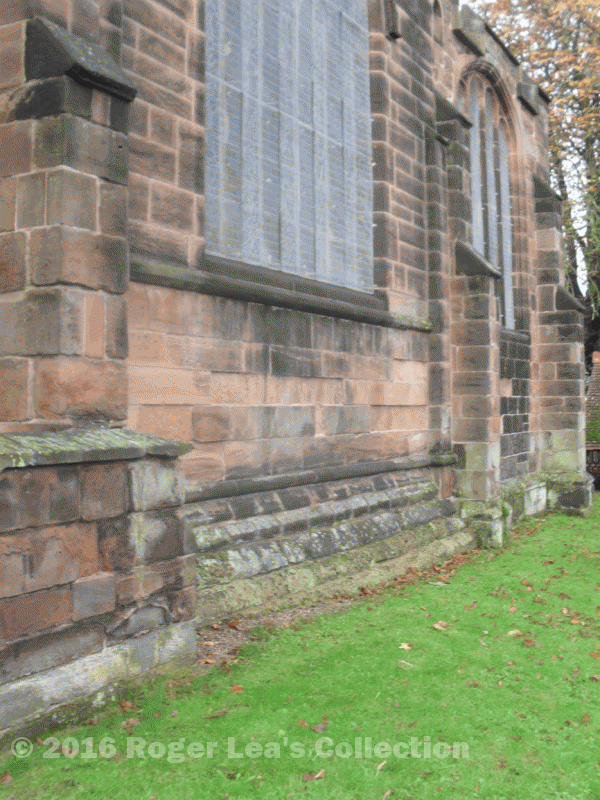The earliest documentary reference to a church in Sutton Coldfield is in 1291, when the “Taxation of Pope Nicholas” in the Vatican Archives in Rome refers to a payment by Guy Beauchamp, Earl of Warwick, for Holy Trinity Church in Sutton, valued at twenty marks. The earlier history of the Parish Church is a matter of speculation and guesswork.
Sutton Library has an unpublished history of the Church by the late N.G.Evans, in which he comments on the site of the church - it is not aligned due East and West, as most old churches are, and although it occupies a prominent position, it is not on the summit of the hill, which is occupied by the graveyard, nor is it in the centre of the churchyard. One possible explanation for this is that it replaced an earlier church dating from the Saxon period. The churchyard is a strategic site on a spur of high ground, and one imagines the site being chosen for a new settlement, the timber Saxon dwellings being enclosed in a stockade forming the “burh” of Sutton, perhaps in the seventh century. By the ninth century the Kingdom of Mercia had converted to Christianity, and at Sutton the natural position for a church would be adjacent to the “burh” which occupied the top of the hill, but the lie of the land dictated an alignment a few degrees off from an east-west axis.
If there was such a church, it should have been recorded in the great survey of England known as the Domesday Book, compiled in 1086. Sutton is one of the Manors listed in Domesday, but there is no mention of a priest - places with a priest are assumed to have a church - neighbouring manors Middleton and Aston had priests, but Aldridge, Shenstone and Drayton did not, though there were probably churches there. In the Weald of Kent there are known to have been over 100 churches not mentioned in Domesday - the countryside of North Warwickshire and South Staffordshire was a wooded landscape similar to the Weald, so churches may similarly have been omitted.
Lack of evidence for a Saxon church at Sutton is usually explained by the presence on Manor Hill of a large manor house/hunting lodge owned by the Earls of Mercia, with a chapel attached where the Earl’s chaplain would conduct services for the Sutton people. After the Norman Conquest the chapel was rebuilt and dedicated to St. Blaize. The Chaplain certainly served the Sutton folk at one time - the chaplain in 1480 was still receiving twelve pence a year for celebrating Mass in the Manor.
Sutton prospered in the twelfth and thirteenth centuries, and the Earls or Warwick, as Lords of the Manor, maximised their income by modernising the town, laying out the High Street and market area, appointing a Rector and building a church. The old Saxon Burh was cleared away to become the churchyard, leaving no trace. This may have been done by William of Newburgh, Earl from 1153-1184, or perhaps much later by the first Earl of the Beauchamp dynasty, William, 1267-1298. Of the present building, only the footings of the east wall of the chancel can certainly be dated to the thirteenth century or earlier.
